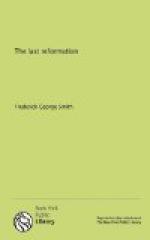The interpretation of this beast given by the angel possesses unusual interest. “Thus he said, The fourth beast shall be the fourth kingdom upon earth, which shall be diverse from all kingdoms, and shall devour the whole earth, and shall tread it down, and break it in pieces. And the ten horns out of this kingdom are ten kings that shall arise” (verses 23, 24). Since the interpretation given by Daniel identifies the first kingdom with the Babylonian Empire, we have an infallible starting-stake. Therefore the “fourth” kingdom represented by the terrible nondescript beast of chapter 7 is none other than the Roman. The ten horns of this beast are interpreted to signify ten kings, or kingdoms, thus representing the ten minor kingdoms into which the Roman Empire was finally subdivided.
The description given of the tyrannical reign of this fourth beast aptly portrays the history of Rome. By wars and conquests the Roman power broke down all opposition and reduced almost every kingdom in the then-known world to a state of dependence. She drew the spoils of their capitals to enlarge her own proud metropolis and thus tyrannized over all who did not quietly yield to her unquestioned obedience.
The beast considered as a beast, could signify nothing more than a political power, and the ten horns temporal kingdoms. But in this connection I wish to call attention to a singular fact; namely, that, associated with the animal propensities, there are certain characteristics drawn from human life. “I considered the horns, and, behold, there came up among them another little horn, before whom there were three of the first horns plucked up by the roots: and, behold, in this horn were eyes like the eyes of a man, and a mouth speaking great things” (verse 8).
[Sidenote: The marvelous horn]
A horn with the eyes and mouth of a man is a most unusual thing, and yet it is just such a combination as we might expect when we possess a correct understanding of the nature of symbols. These closely united symbols drawn from two departments—human and animal life—point us with absolute certainty to a temporal power combined with an ecclesiastical power. The chronology of the event is fixed by the fact that this eleventh horn came up among the ten horns, three of the original ten being removed in order to give it room. The ten kingdoms all arose within two centuries after 356 A.D.; therefore the facts brought out in the symbol direct us to the period of the downfall of Western Rome for the rise into prominence of the little horn.
In giving Daniel the interpretation of the fourth beast, the angel also described more particularly this little horn and the nature of its work. First Daniel said: “I would know the truth of the fourth beast ... and of the ten horns that were in his head, and of the other which came up, and before whom three fell; even of that horn that had eyes, and a mouth that spake very great things,




